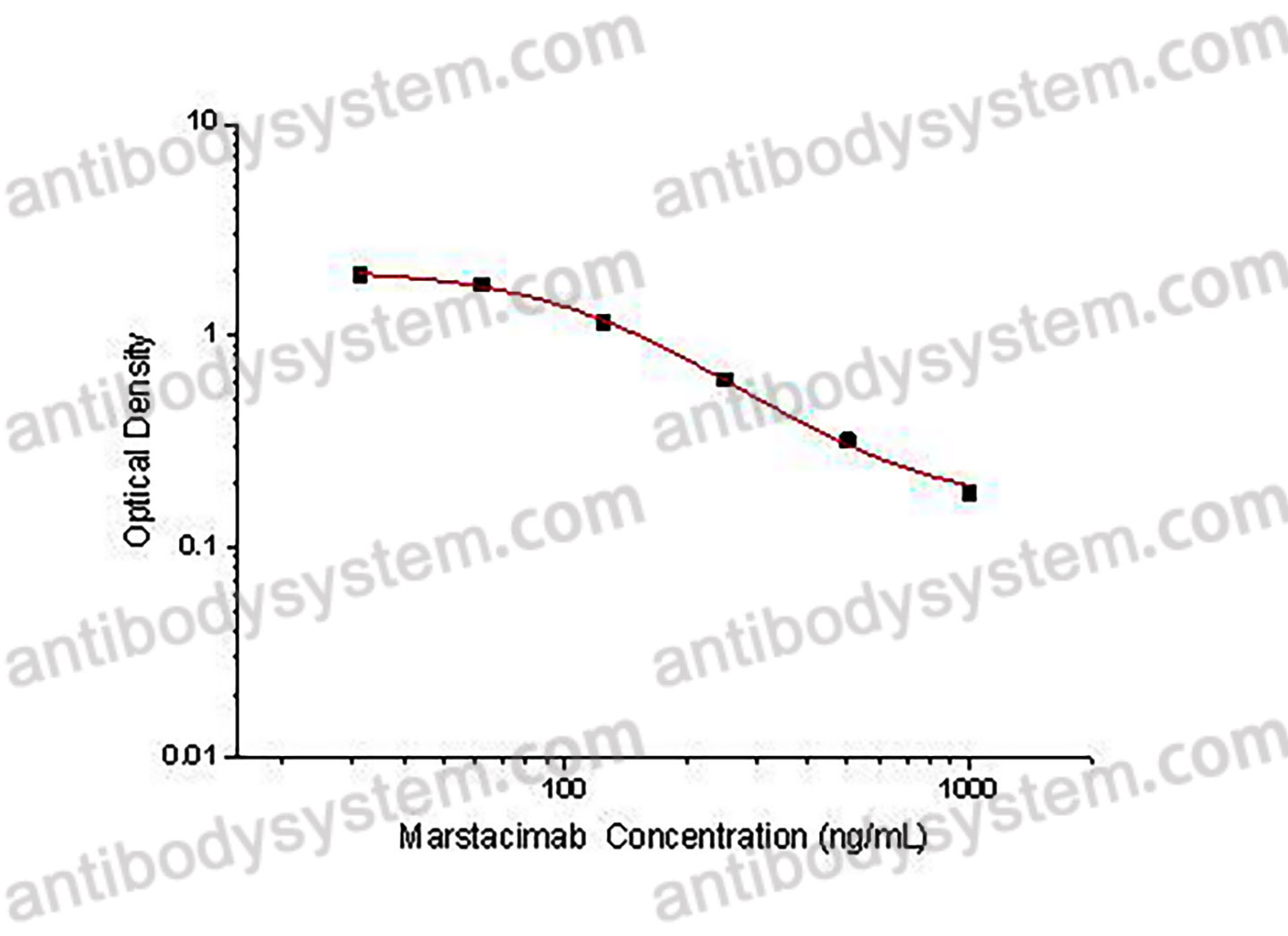Catalog No.
KDC82803
Description
PRINCIPLE OF THE ASSAY This assay employs the quantitative competitive enzyme immunoassay technique. Recombinant Human TFPI has been pre-coated onto a microplate. Standards or samples are premixed with biotin-labeled antibody and then pipetted into the wells. Marstacimab in the sample competitively binds to the pre-coated protein with biotin-labeled Marstacimab. After washing away any unbound substances, Streptavidin-HRP is added to the wells. Following a wash to remove any unbound enzyme reagent, a substrate solution is added to the wells and color develops in inversely proportion to the amount of Marstacimab bound in the initial step. The color development is stopped and the intensity of the color is measured.
Applications
Used for the quantitative determination of Marstacimab concentration in serum and plasma.
Detection method
Colorimetric
Sample type
Plasma, Serum
Assay type
Quantitative
Range
31.25 - 1,000 ng/mL
Sensitivity
39.99 ng/mL
Precision
Intra-Assay Precision (Precision within an assay): <20%
Three samples of known concentration were tested sixteen times on one plate to assess intra-assay precision.
Inter-Assay Precision (Precision between assays): <20%
Three samples of known concentration were tested in twenty four separate assays to assess inter-assay precision.
|
|
Intra-Assay Precision |
Inter-Assay Precision |
||||
|
Sample |
1 |
2 |
3 |
1 |
2 |
3 |
|
n |
16 |
16 |
16 |
24 |
24 |
24 |
|
Mean (ng/mL) |
574.2 |
120.8 |
47.5 |
463.0 |
118.3 |
46.5 |
|
Standard deviation |
50.2 |
12.8 |
8.1 |
33.1 |
14.9 |
9.3 |
|
CV (%) |
8.7 |
10.6 |
17.1 |
7.2 |
12.6 |
19.9 |
Recovery
80-120%
Shipping
2-8 ℃
Stability and Storage
When the kit was stored at the recommended temperature for 6 months, the signal intensity decreased by less than 20%.
Alternative Names
PF-06741086, CAS: 1985638-39-8
Background
Marstacimab, previously known as PF-06741086, is a fully human monoclonal antibody IgG1 antibody that binds to the K2 domain of TFPI at nanomolar to suprananomolar concentration ranges. Non-clinical experiments demonstrated that marstacimab could enhance thrombin generation in vitro and in vivo in a concentration-dependent manner. In vitro thrombin generation assays (TGAs) and dilute prothrombin time (dPT) assays evaluating Marstacimab added to donor plasma from healthy normal volunteers and patients with haemophilia A, haemophilia B, and haemophilia A with inhibitors have all shown the ability of marstacimab to increase coagulation activity and promote haemostasis. Bleed control was demonstrated in severe injury mice models of haemophilia A and B.

